Tagging Goshawks in the Brecks
Understanding movements and ecology
The Goshawk is an intriguing raptor, as a powerful but normally elusive species. Nationally, it is still a scarce breeding bird, protected under Schedule 1 of the Wildlife and Countryside Act 1982, with a population considered to be far below carrying capacity in most regions. Apart from nest protection, as a generalist raptor, prey availability is unlikely to be severely limiting at present, though survival and recruitment may be key operators. But currently very little information is available on demographic rates for Goshawks in the UK and indeed, no basic, objective information is available on how the species interacts with the countryside, where it may incur risk. In 2015, the BTO began a programme of research on Goshawks aimed at improving our understanding of the species through its movements and ecology, by assessing lowland forest and farmland dependency. This work centered on the Thetford Forest in the Brecklands of East Anglia, where the Goshawk breeding population has been monitored closely for years and where forest management is sympathetic to the protection of nest site habitat. After fledging, however, virtually no information was available on this 'forest' species' behaviour, its scale of movement or its reliance on non-forest habitats. To address the knowledge gap we began a project that would improve our understanding of the way Goshawks interacted with the lowland countryside.
Chick diet
A brief study of prey selection when feeding chicks revealled Grey Squirrel contributing most items, with Woodpigeons and corvids (all species) being important too. The diet is broad, however, and probably refelcts availability, rabbits being more prominent at one nest for example (summarised in Fig. 1).
Figure 1- A 2017 update of the breakdown of 129 prey items found on or by Goshawk nests in the Brecks.
Tracking studies
We began tracking juvenile Goshawks in 2016 addiing further birds in 2017 and 2018. From 15 tracks, we found that on leaving the nest, young Goshawks disperse into the wider countryside, sometimes travelling up to 30 km away but often moving only 5 km. Typically, their entire winter is centred on farmland rather than forest, where we suspect these naïve hunters avoid older Goshawks (that may kill them) or find food to be more accessible. In March, when territorial Goshawks are displaying, the young birds begin to interact with them, spending more time over the forest once again. Young females appear to undertake wide ranging exploratory journeys at this time, sometimes covering East Anglia (image below), no doubt in search of unattached males. Most birds settle to breed one year later, however. The smaller males are very active on a local scale but are seemingly less exploratory come the spring.
To date, we have learnt more about local Goshawk movements in the last 3 years from tracking than for decades before, and the study is ongoing. We know that the Breckland population is unlikely to be isolated. We now know there is a high level of interaction with farmland. As regards mortality, we know road traffic collisions, predation (probably by other Goshawks) and disease all play a role, and some birds just go missing.
Acknowledgements
The Goshawk population in the Brecks is closely monitored by several dedicated individuals, with special thanks given to Bernard Pleasance and Simon Evans as well as the Forestry Commission England for their interest and support. Funding partners include the ‘Breaking New Ground’ Landscape Partnership Scheme supported by the Heritage Lottery Fund and A Sound Approach.


Image: Tracks for three Breckland Goshawks, two females (red and green), and a male (blue), as of end April 2018. All three were hatched in 2017. The green female took a ~20 day tour of East Anglia from 16th March before returning 'home'. Other females have shown similar patterns of behaviour.

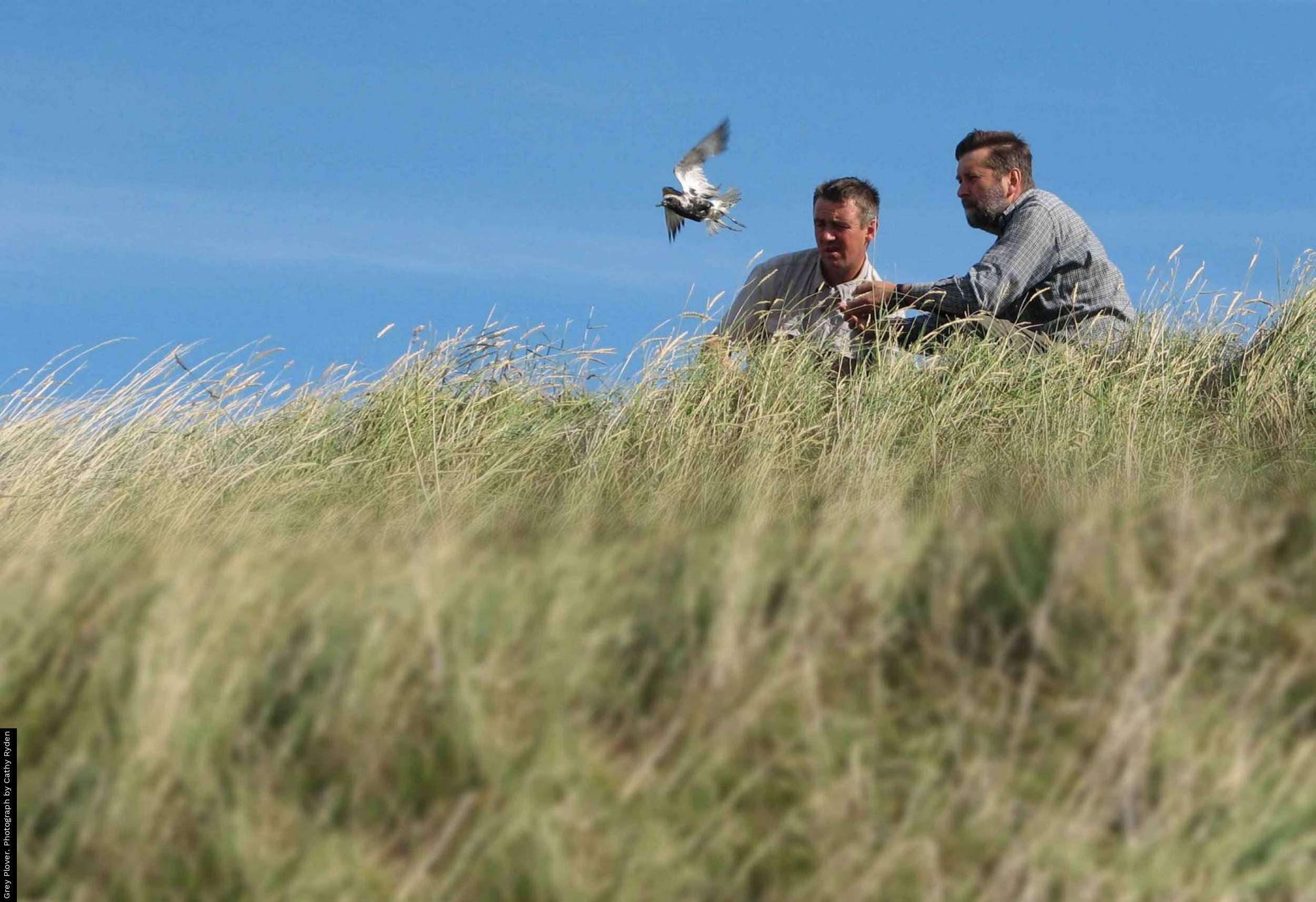
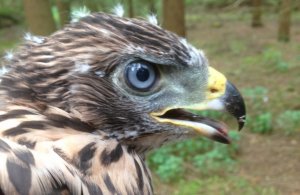
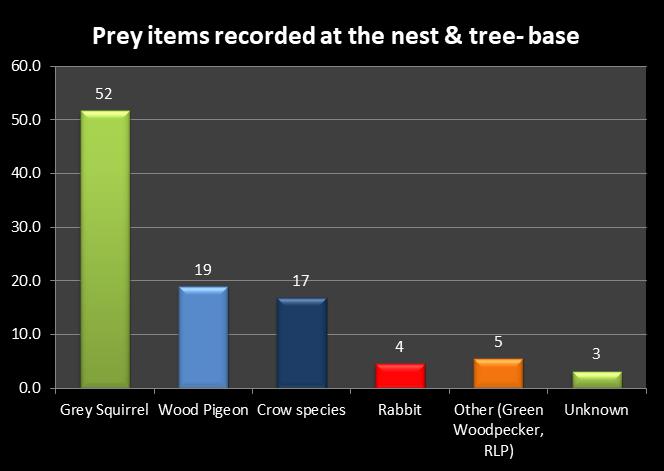
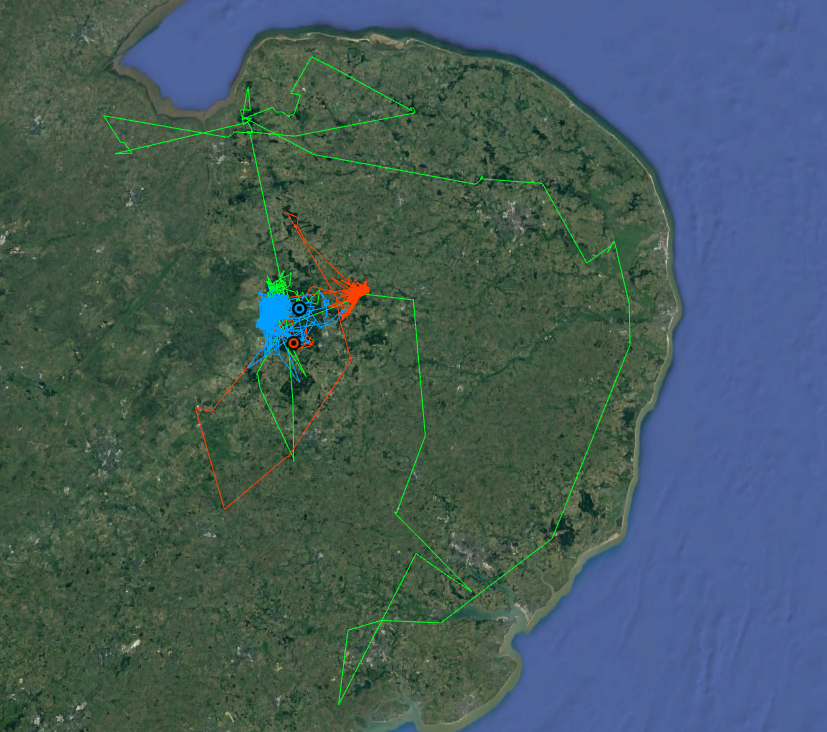

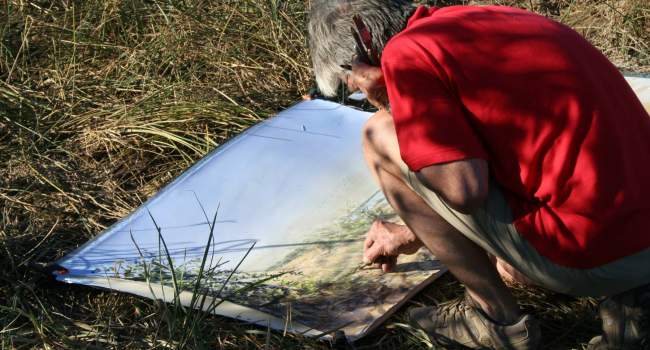


Share this page